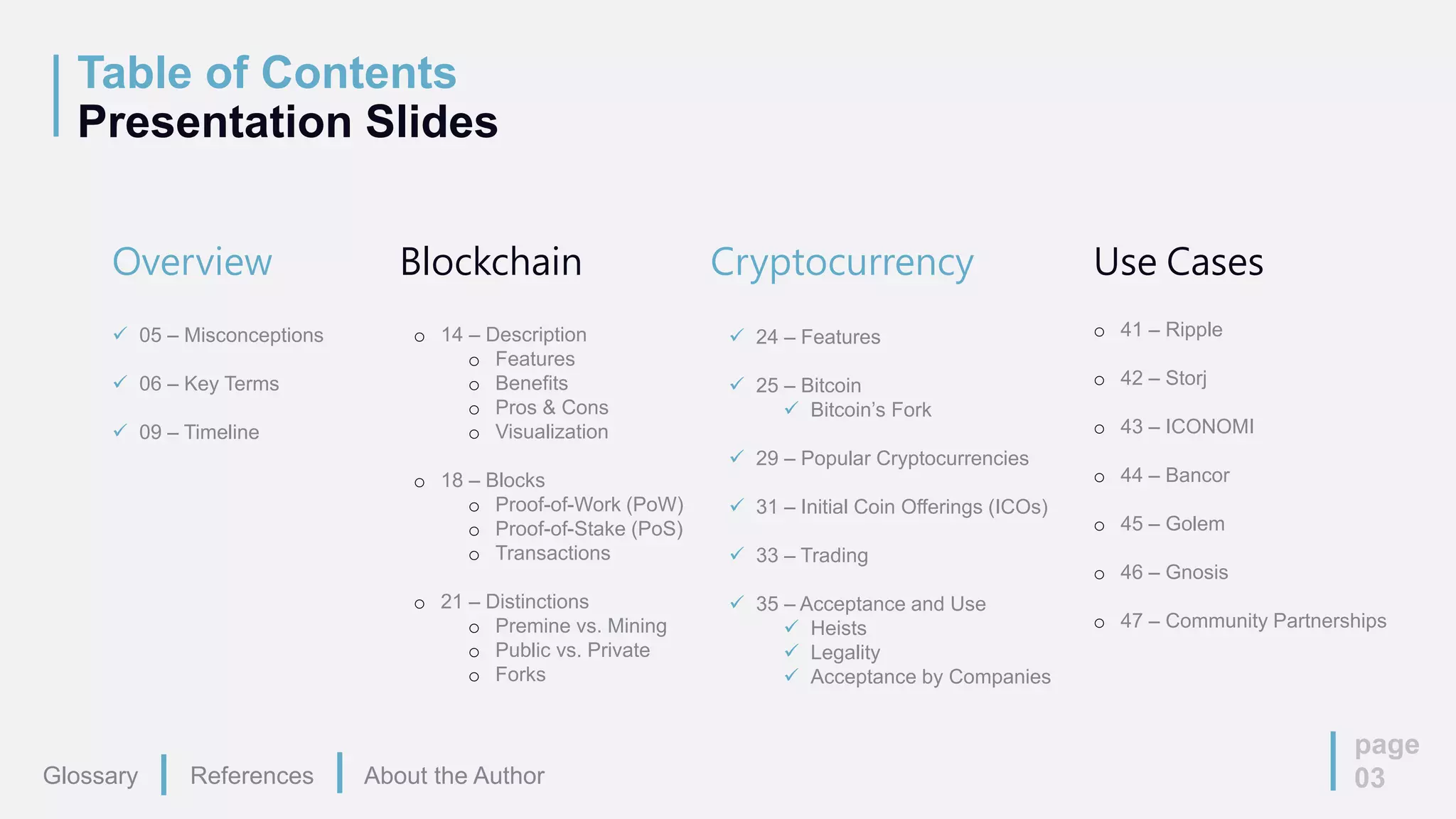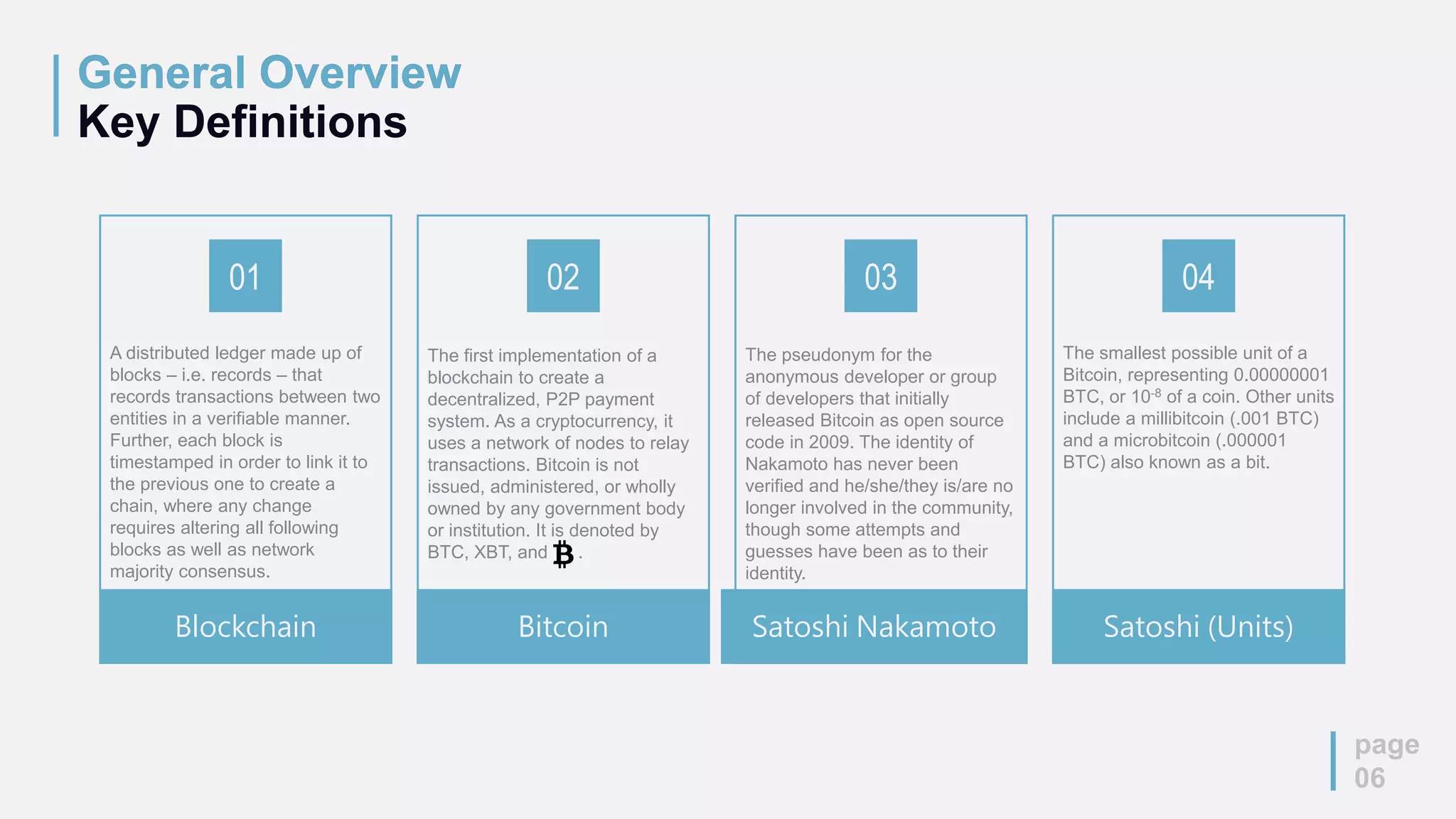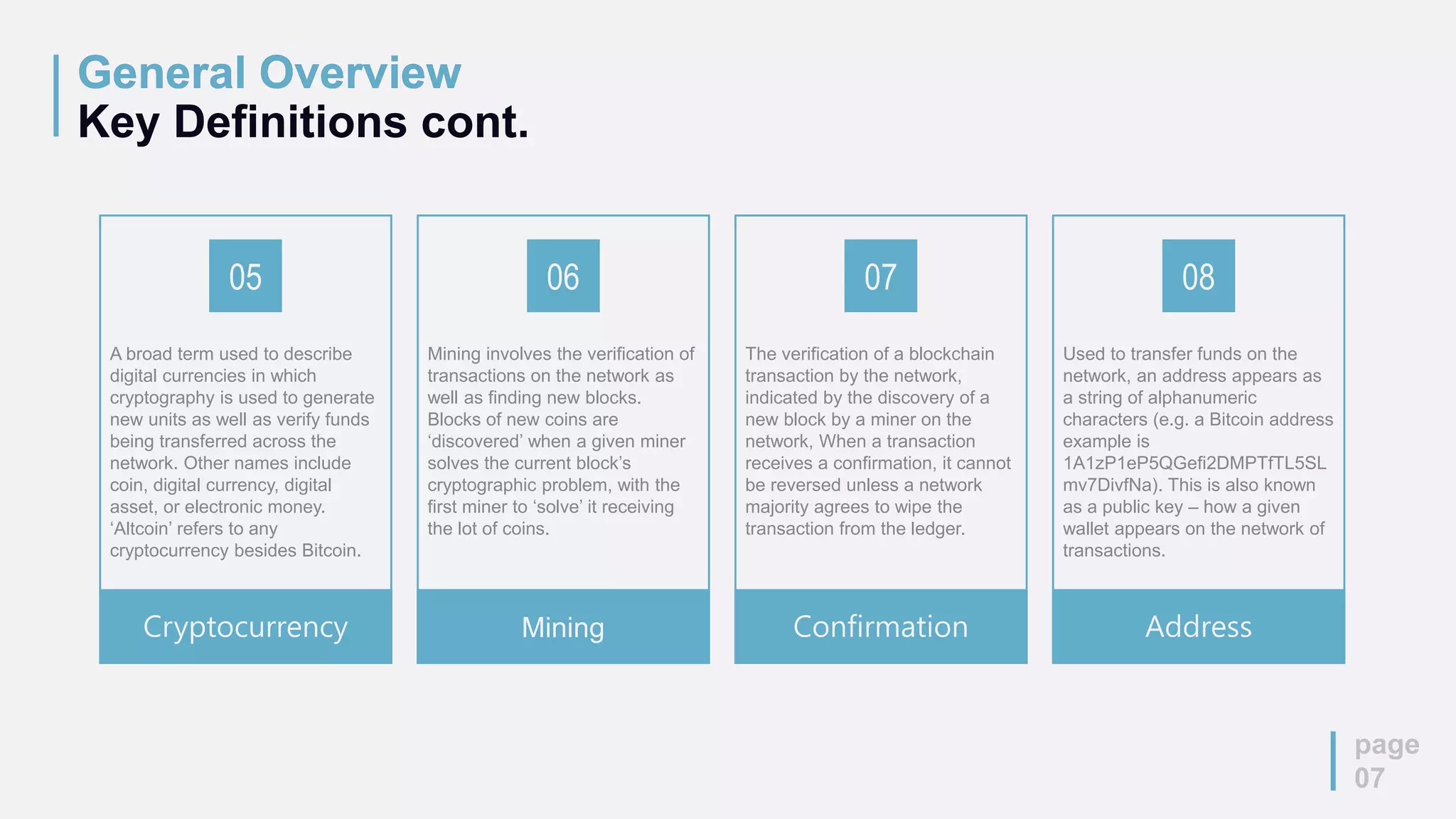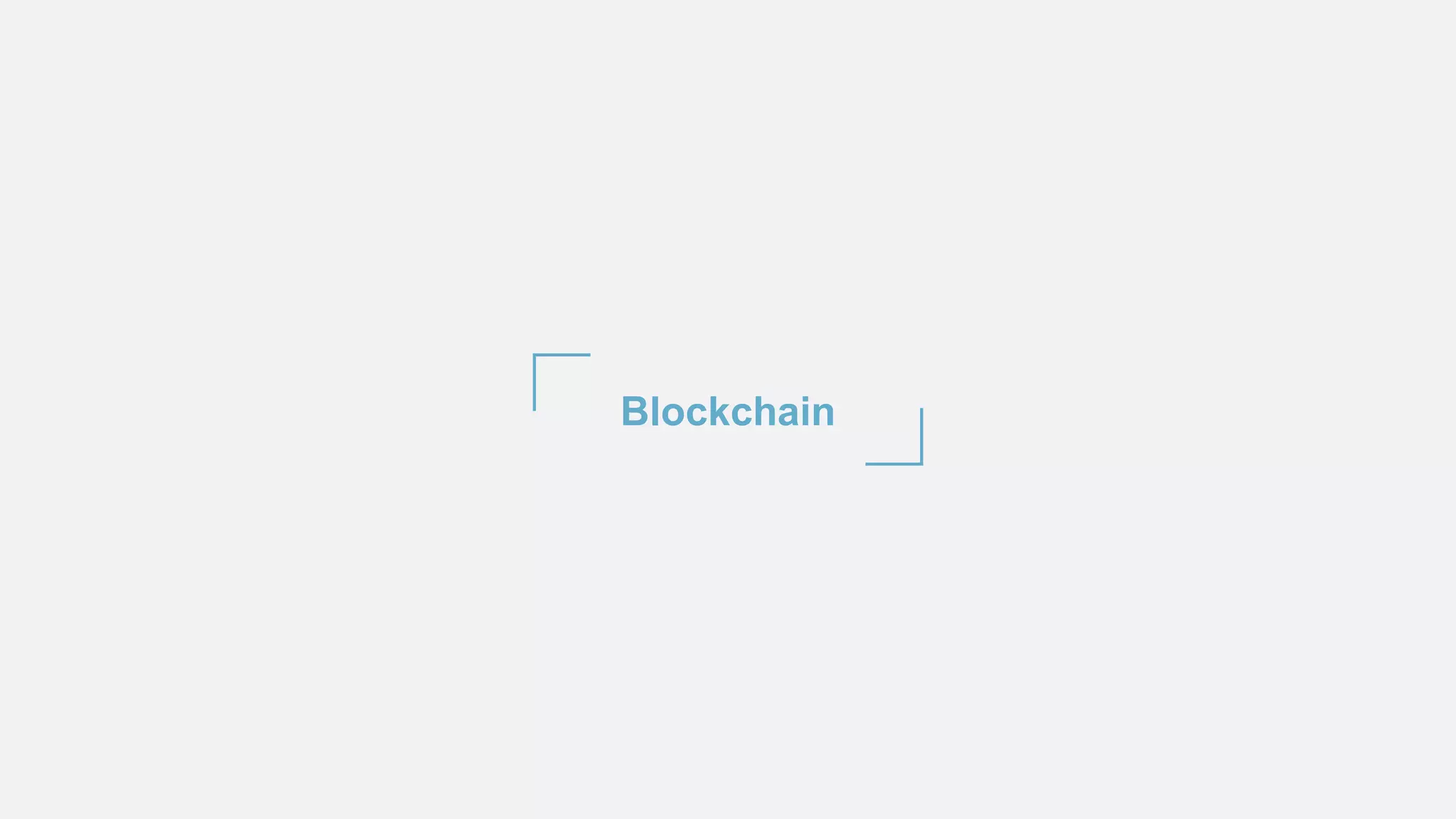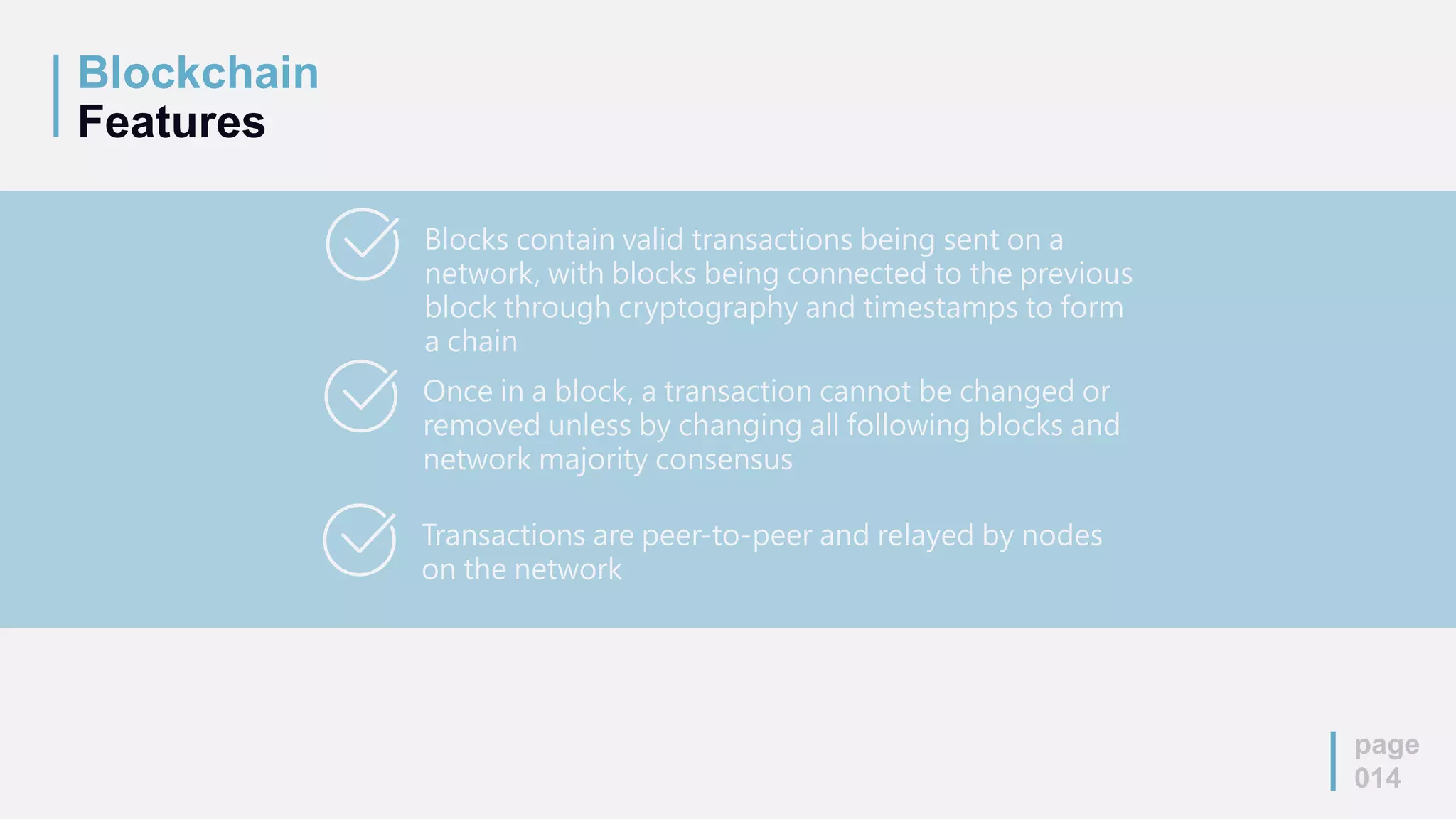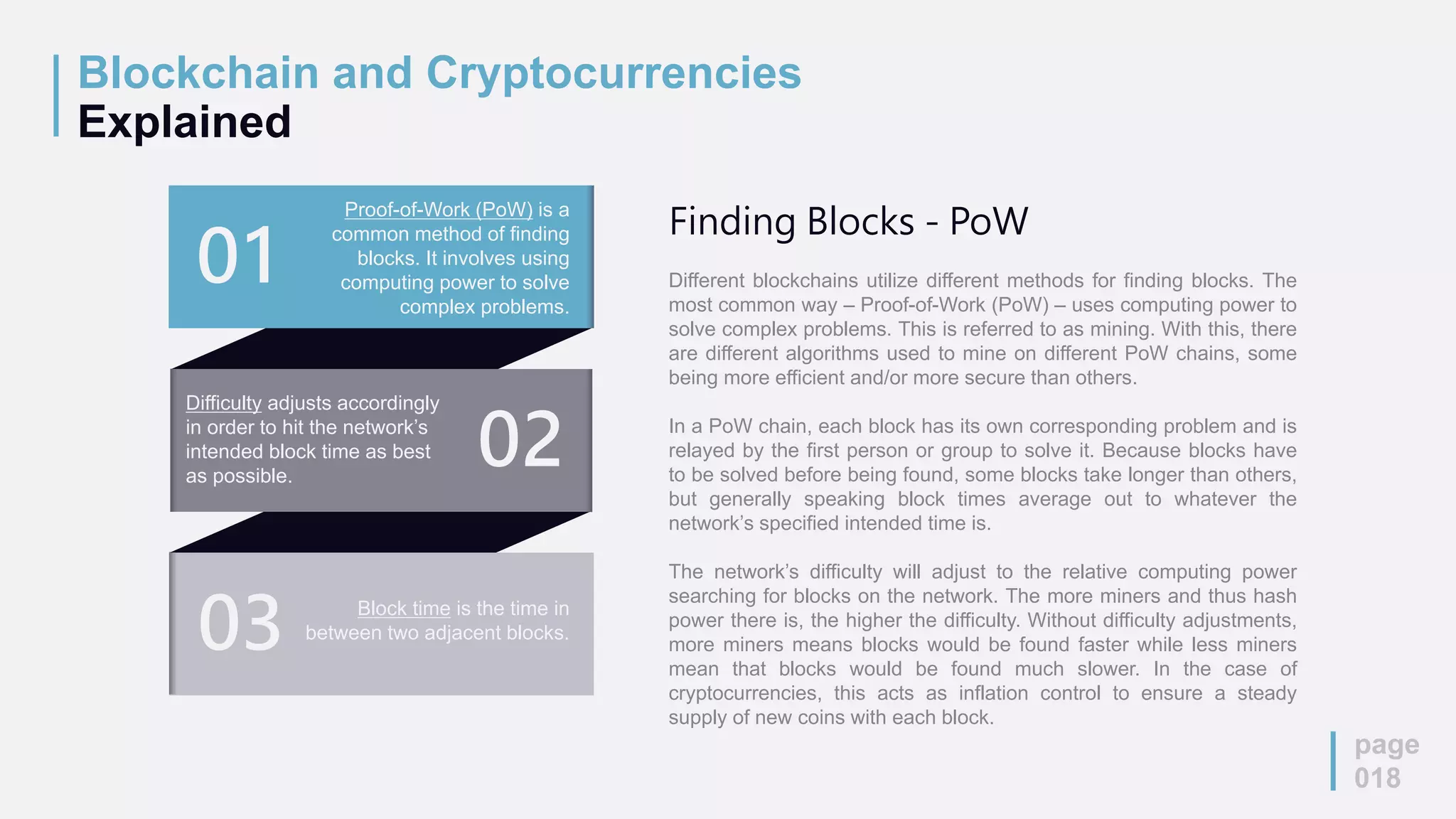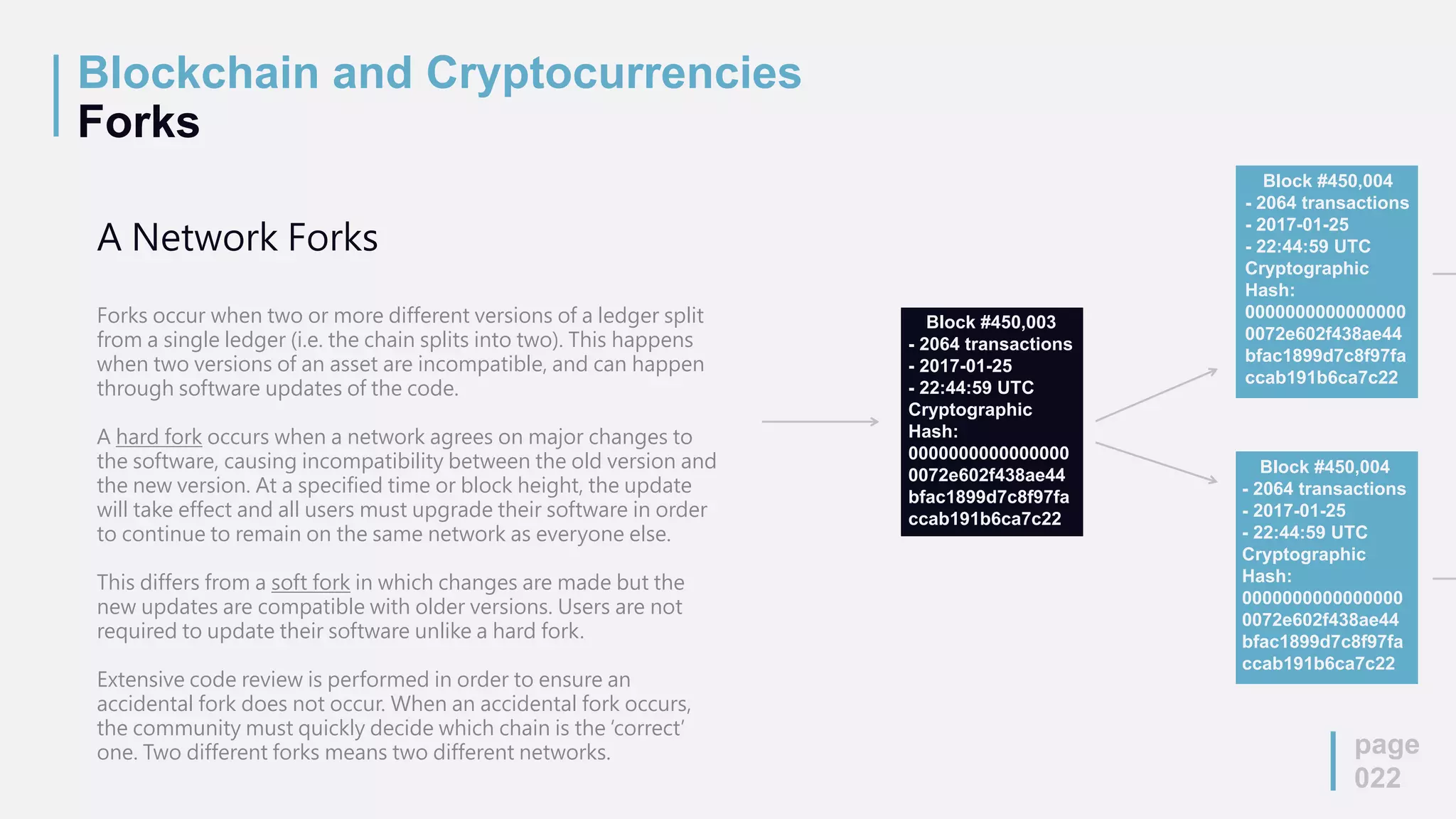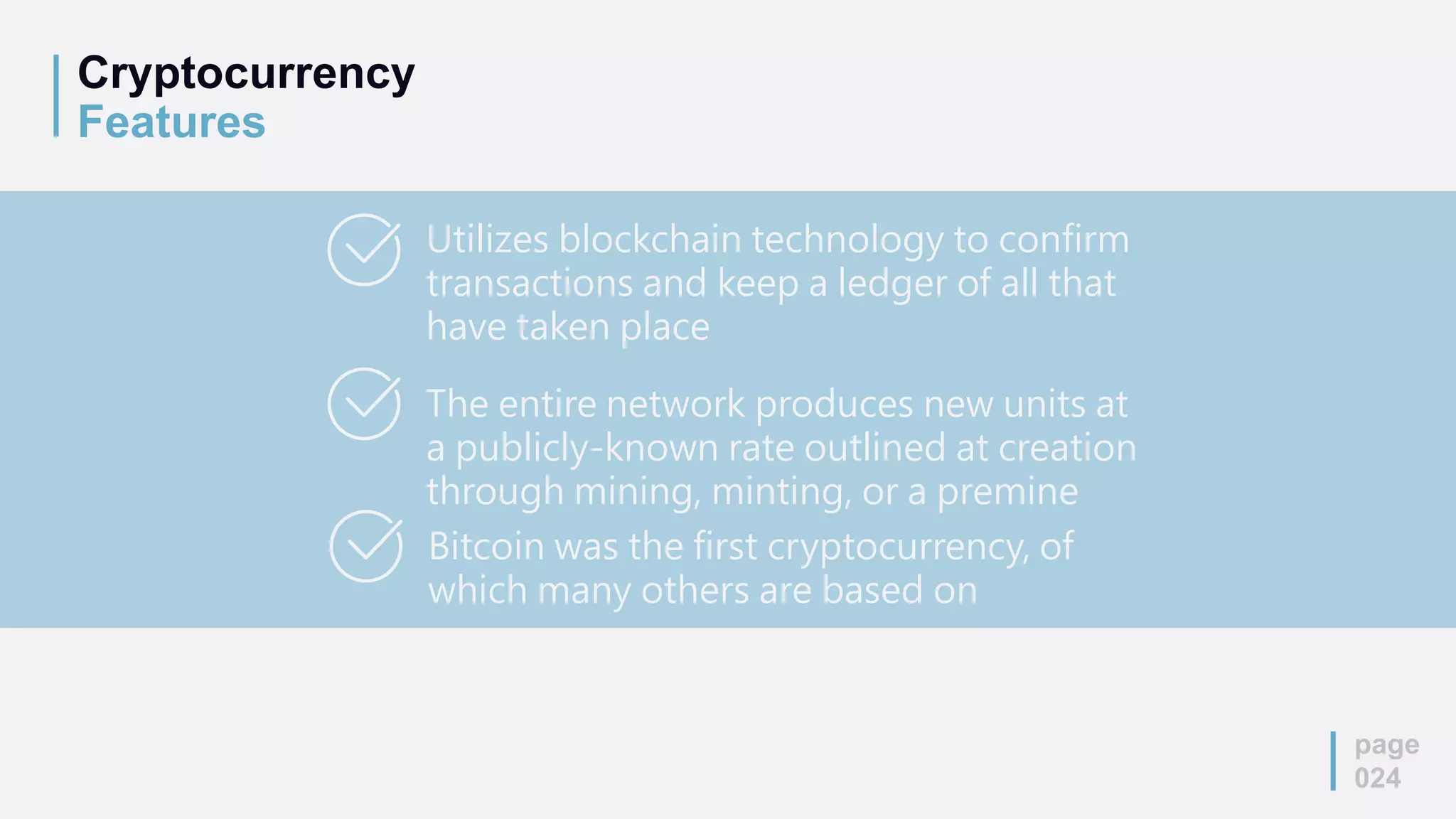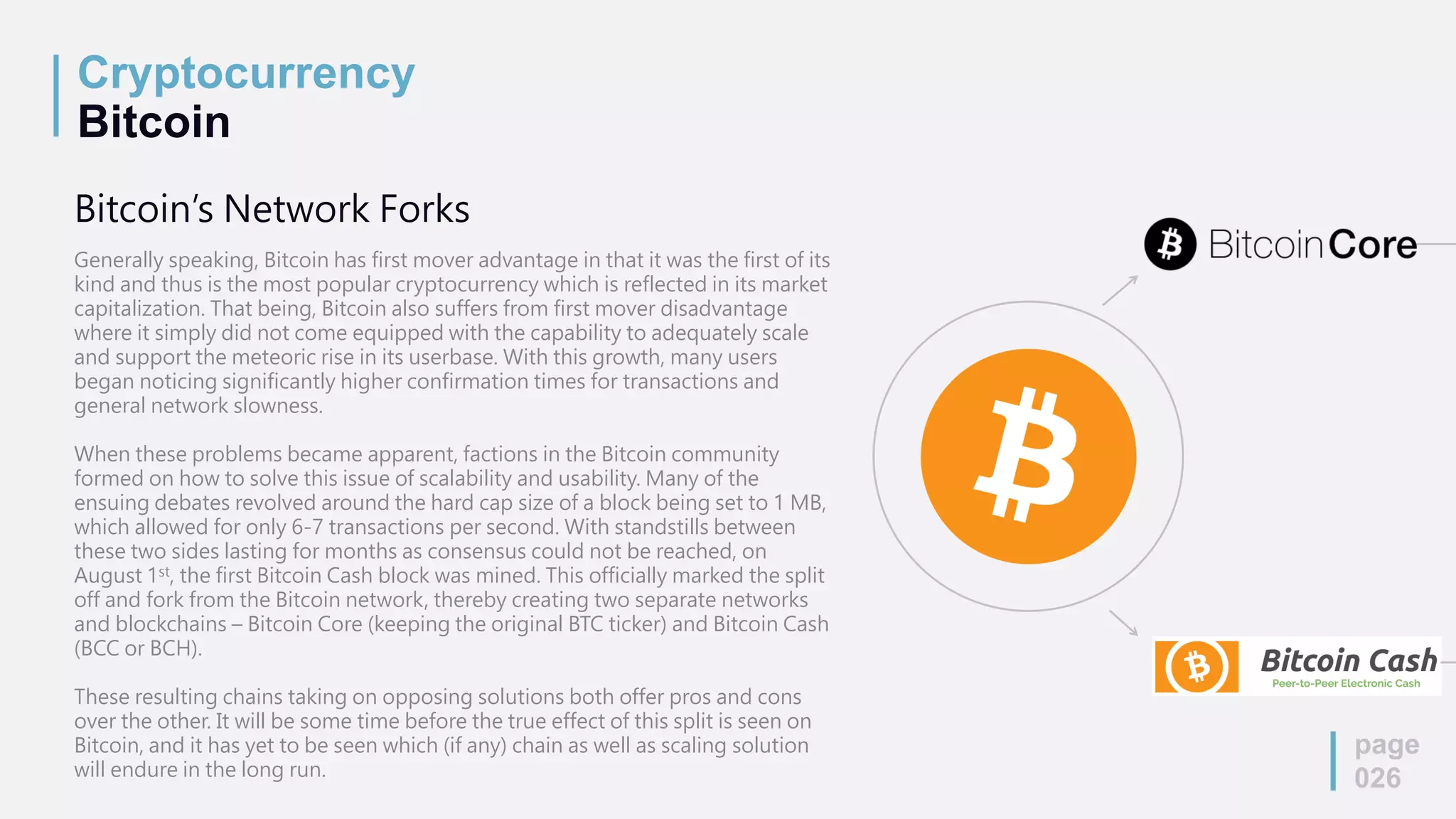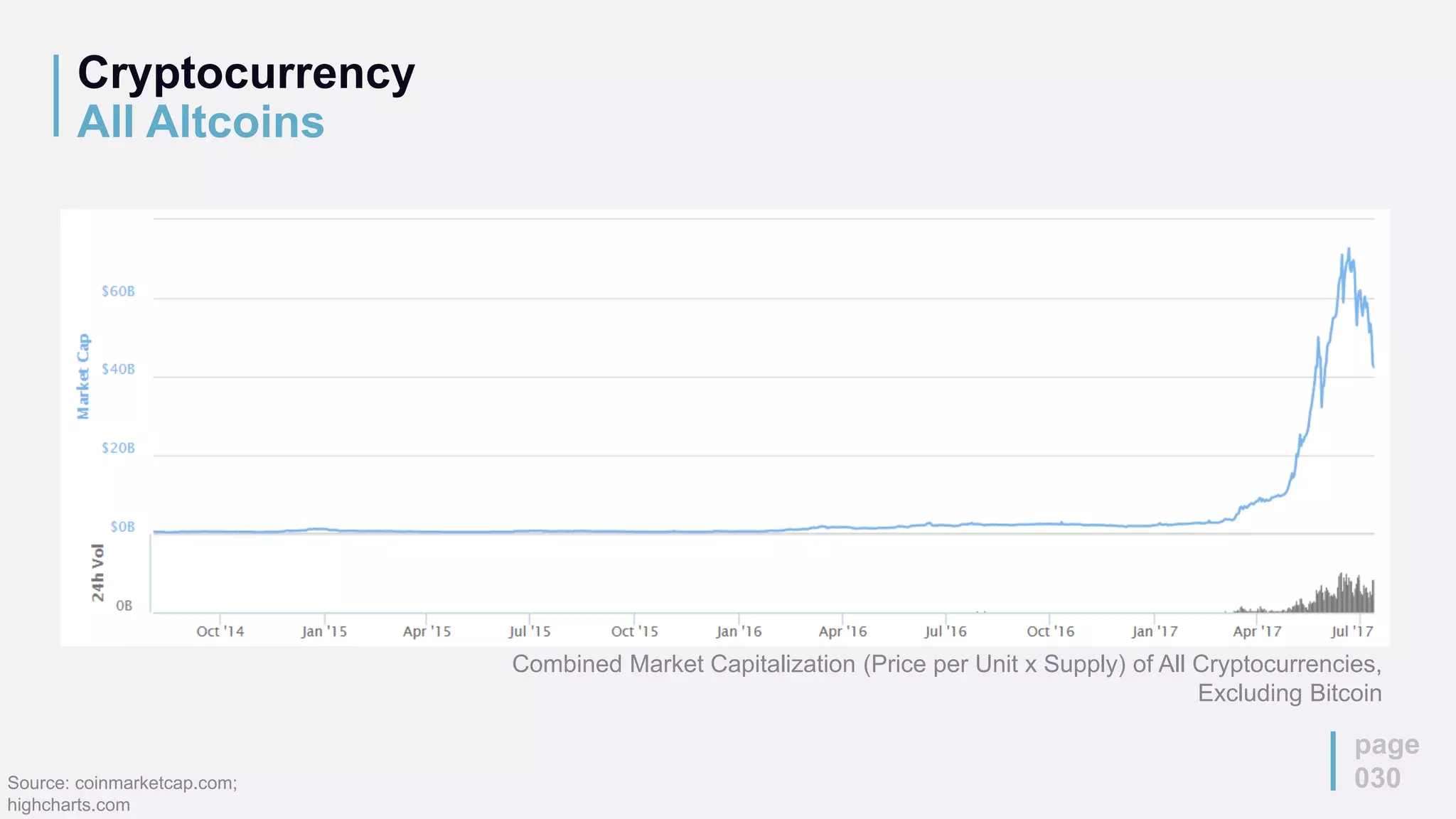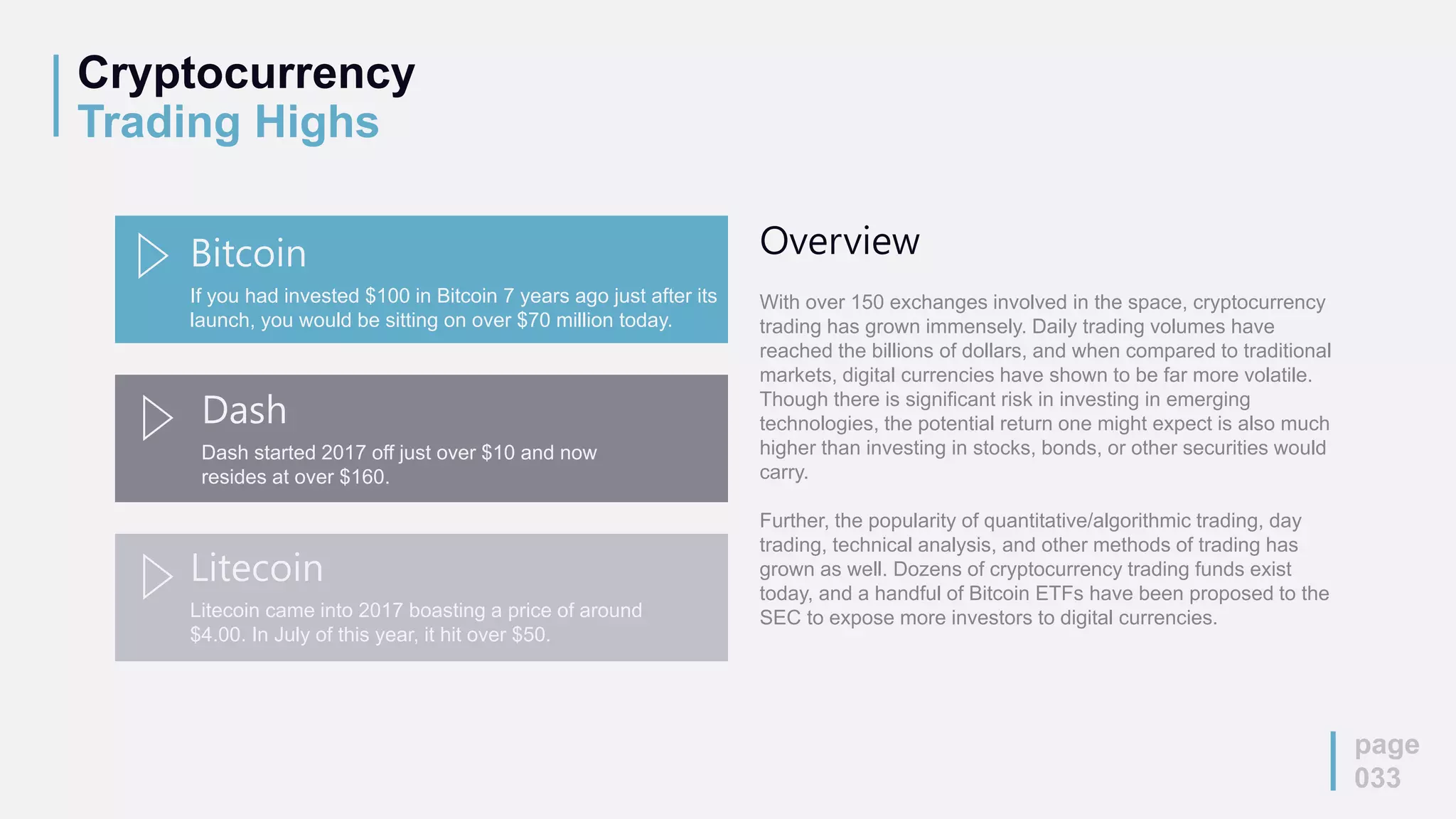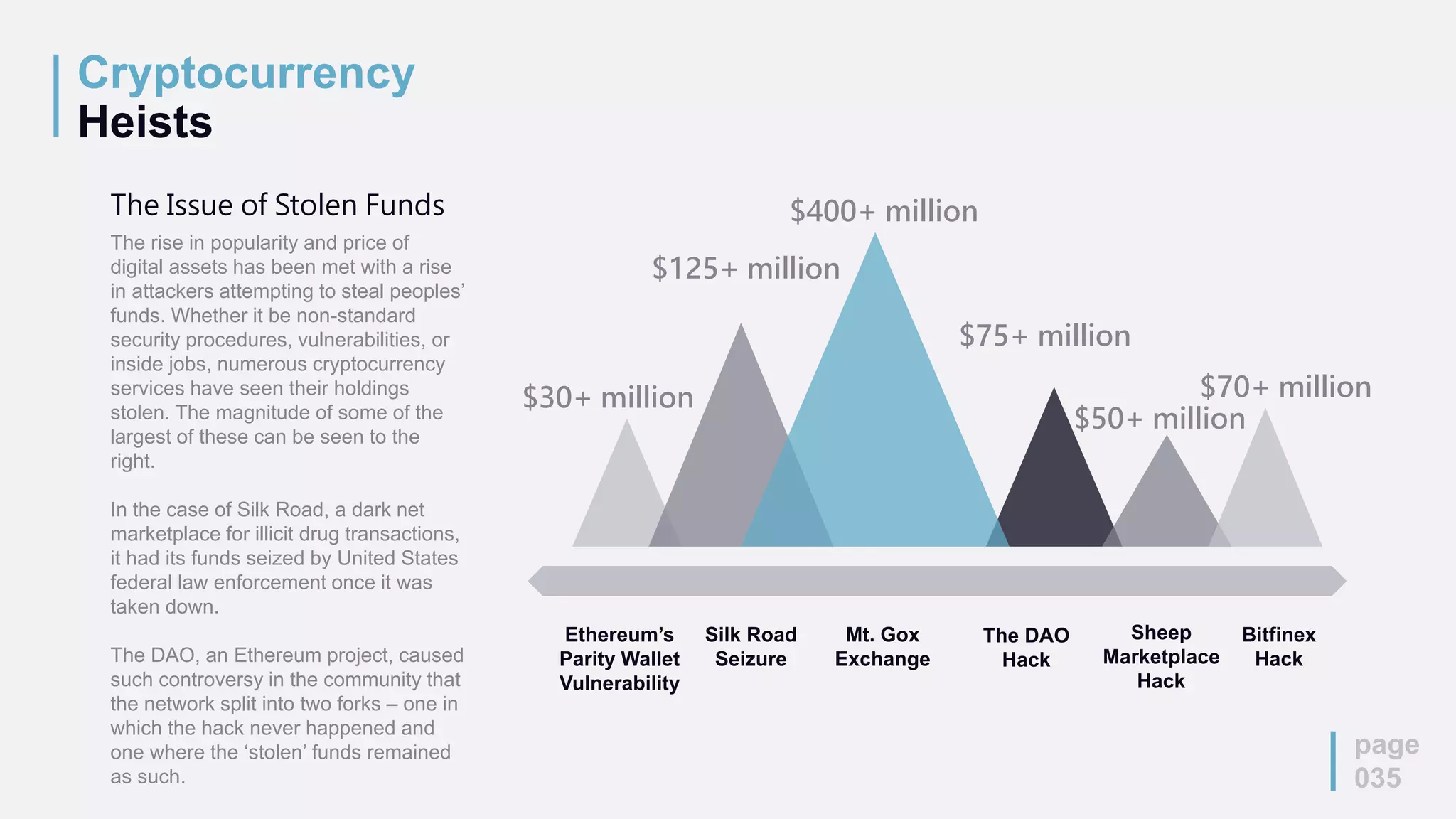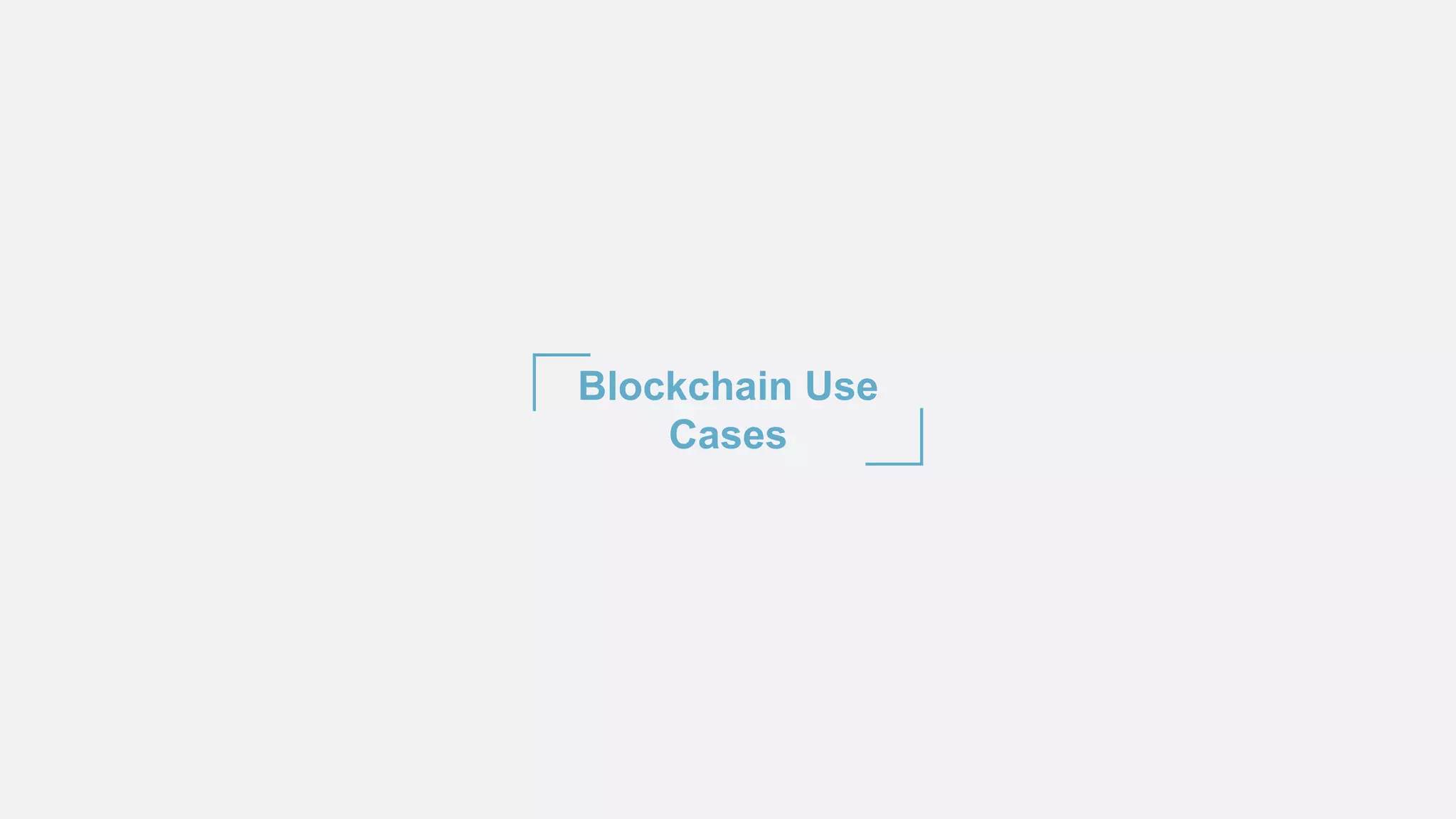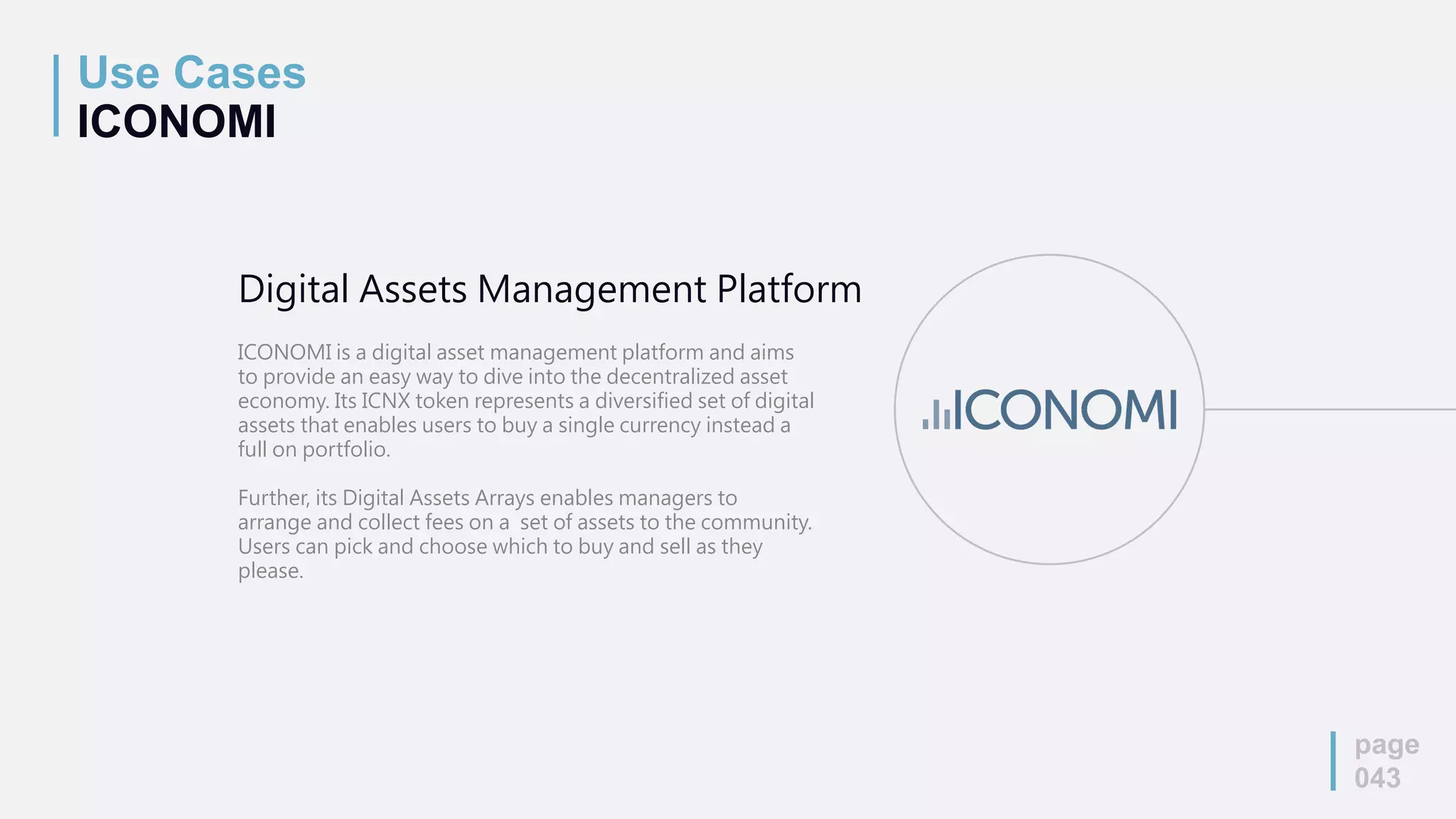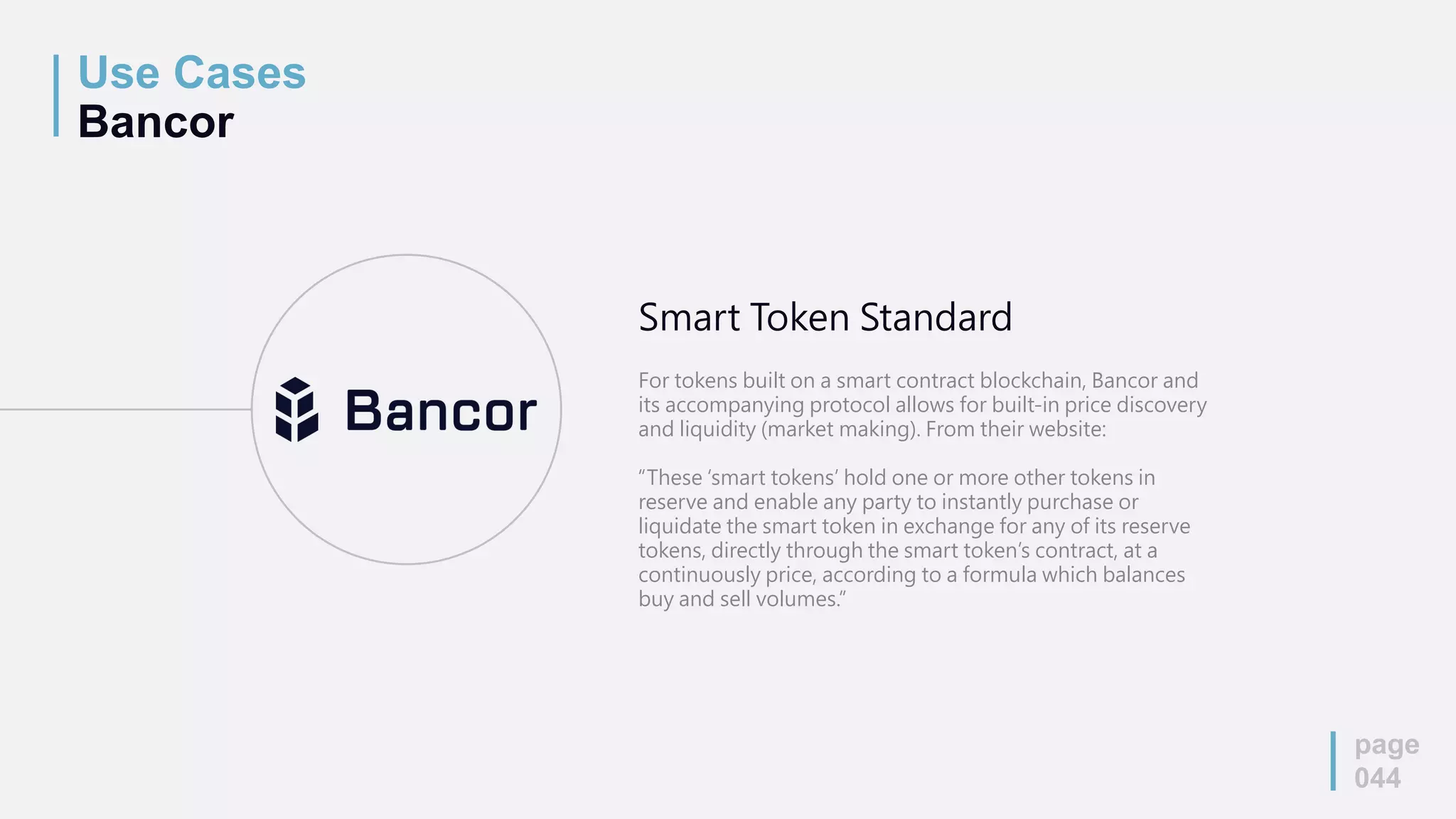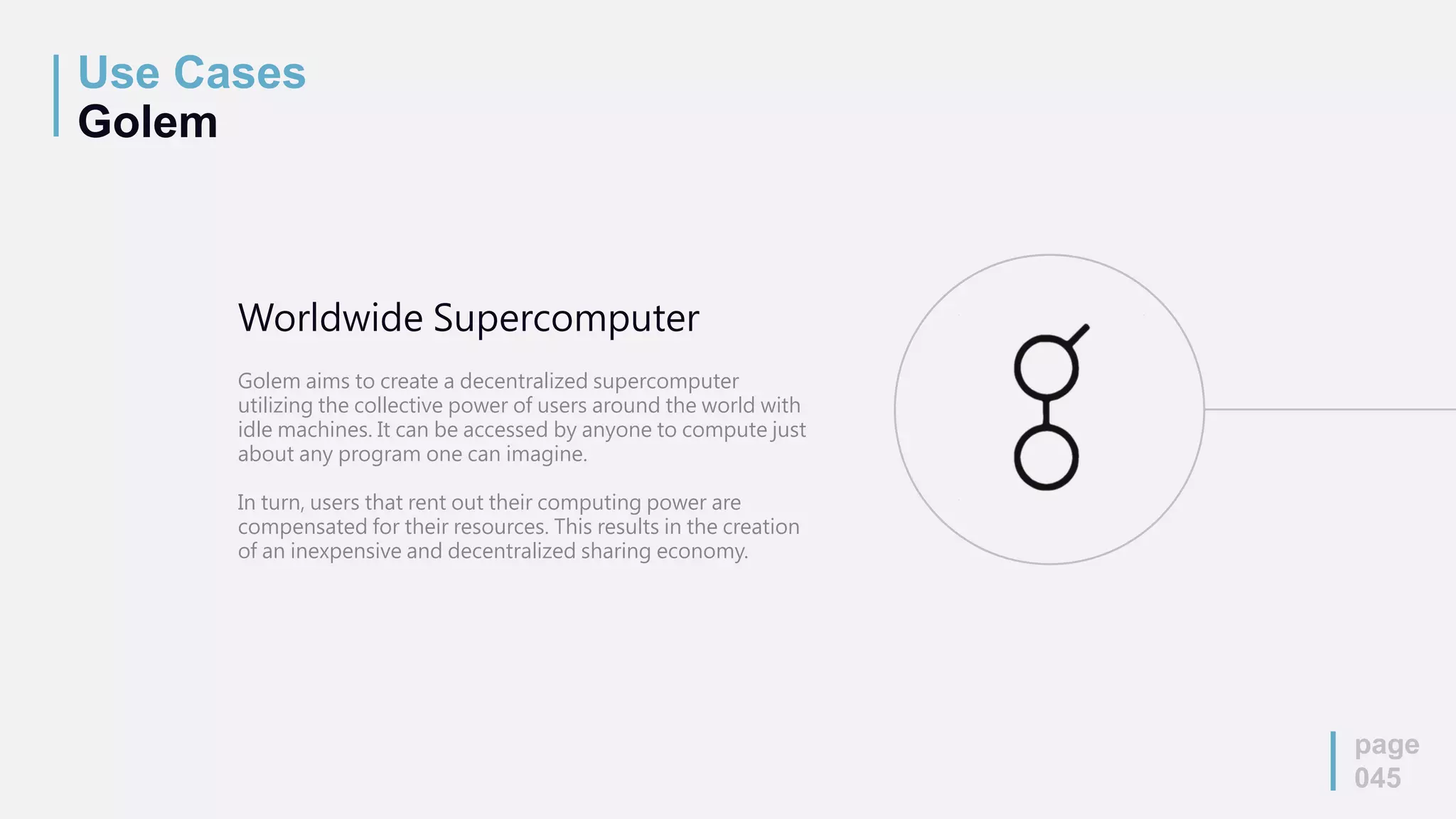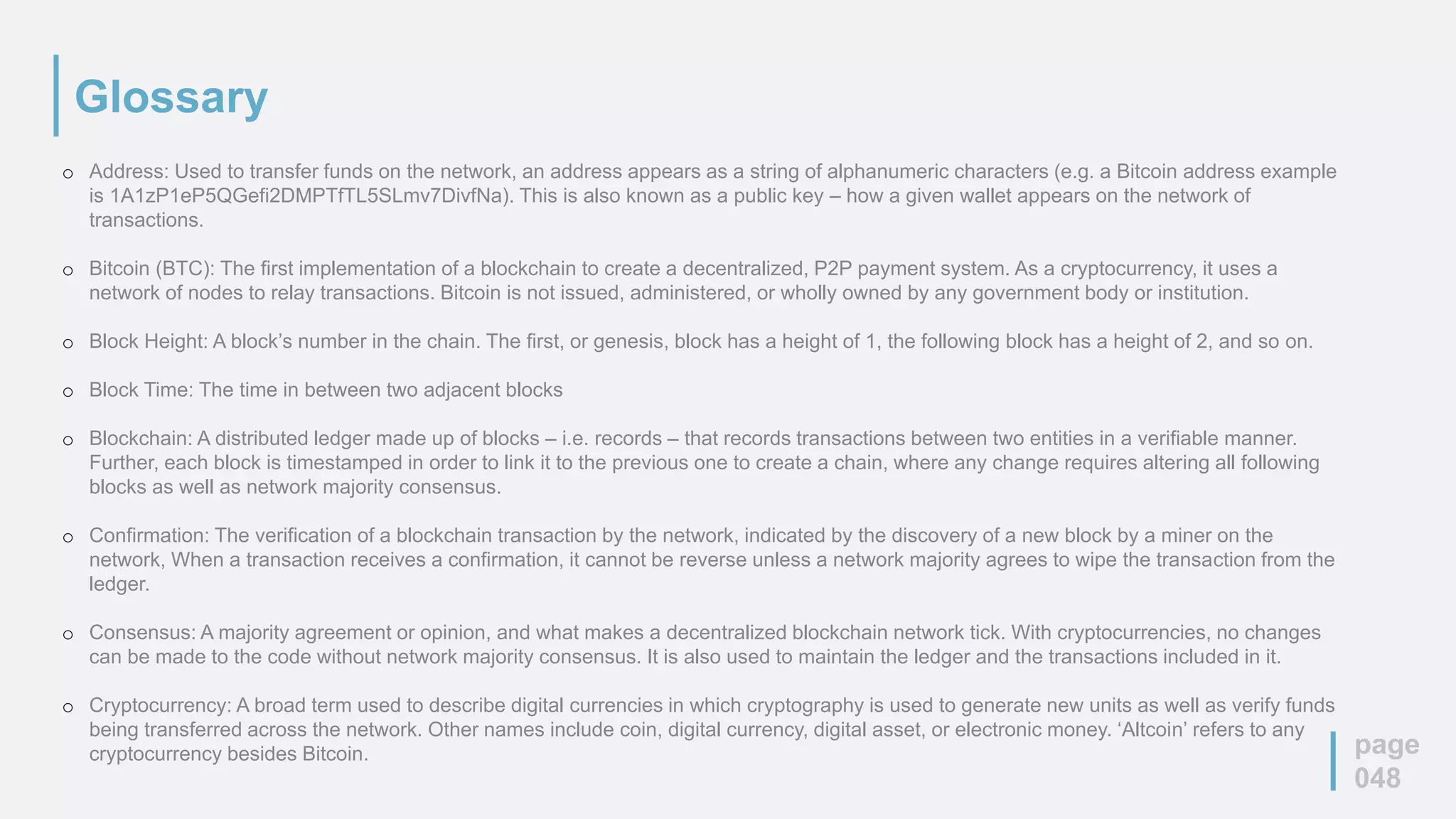The document provides a comprehensive overview of cryptocurrencies and blockchain technology, covering essential definitions, historical timelines, and features of major cryptocurrencies like Bitcoin and Ethereum. It addresses misconceptions surrounding ownership, anonymity, and legality while explaining fundamental concepts like mining, proof-of-work, and proof-of-stake. Additionally, it explores the pros and cons of blockchain technology and highlights notable use cases and trends in cryptocurrency adoption.

![J. Orlin Grabbe
Economist
“Cryptology represents the
future of privacy [and] by
implication [it] also represents
the future of money, and the
future of banking and finance.”
Peter Thiel
Co-Founder of PayPal
“I do think Bitcoin is the first
[encrypted money] that has
the potential to do
something like change the
world.”
John McAfee
Founder of McAfee
“You can’t stop things like
Bitcoin. It will be everywhere
and the world will have to
readjust. World governments
will have to readjust.”
Larry Summer
Former U.S. Treasury Secretary
“I am reasonably confident…
that the blockchain will change a
great deal of financial practice
and exchange.”](https://image.slidesharecdn.com/crypto-170807192754/75/Cryptocurrencies-and-the-Blockchain-2-2048.jpg)
